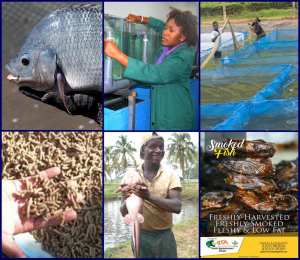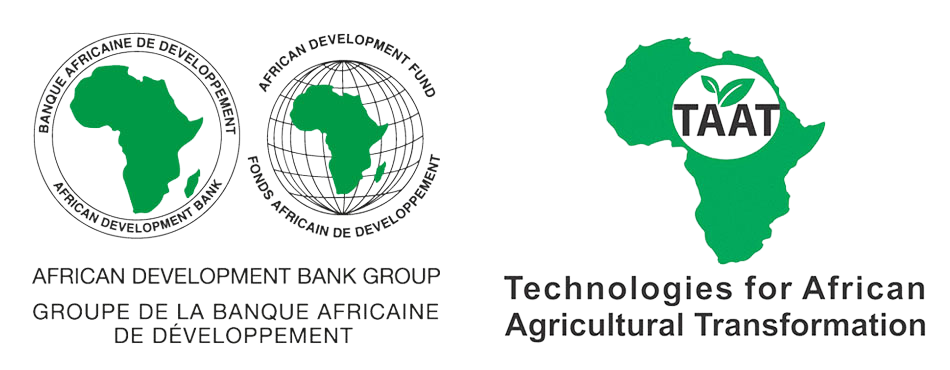The Aquaculture Compact’s Technology Toolkits

This Compact is jointly led by WorldFish and the IITA Youth Agripreneurs through activities in five countries offering greatest opportunity and infrastructure to greatly expand and improve aquaculture. The fish technology toolkits serve to modernize fish farming with focus upon tilapia and African catfish. They are introducing improved breeds of fish by establishing tilapia broodstock centers and facilitating cross-border movement of these elite fish. They are developing low-cost hatcheries where male mono-sexed fingerlings and juveniles are produced under sanitary conditions and distributed with low mortality. In many cases the Compact will establish certification standards where none exist.
A variety of production systems are being promoted including improved ponds but also rearing in tanks and cages. Pond design includes liners for improved water retention and drainage to facilitate fish harvest and pond maintenance. Needs for improved water quality and distribution are being addressed. Clustering production through the establishment of commercial “aquaculture parks” is one means to develop critical mass for fish production technologies. At the same time, numerous existing ponds are operating at very low levels of production due to accessibility and cost of inputs, particularly feeds.
This Compact is assisting in efforts to develop feed systems based upon locally-produced, higher protein feeds with improved buoyancy characteristics manufactured through small-scale pelleting and extrusion technologies. It recognizes the need to provide incentives for millers currently engaged in pelleted livestock and poultry feed production to include fish feed within their product lines. Fish health is also being promoted through protection of water quality, particularly its aeration, and the exclusion of predators and poachers. Harvest technologies achieve complete recovery through nets or drainage with no carryover of adults that feed upon subsequently introduced juveniles.
Value-adding fish processing technologies such as drying and smoking based upon consumer preference are being facilitated, as are “white butcheries” where first-stage processed fish products remain refrigerated or frozen as they reach consumers. Fish farming and processing is viewed as viable enterprises for youth in rural areas. In many cases, fish ponds are integrated with crop production and the value of pond effluent for irrigation and nutrient supply is being considered. Ultimately, this effort serves to offset diminishing catches from inland fisheries, and to reduce fish imports into Africa of cultivated fish produced elsewhere.

